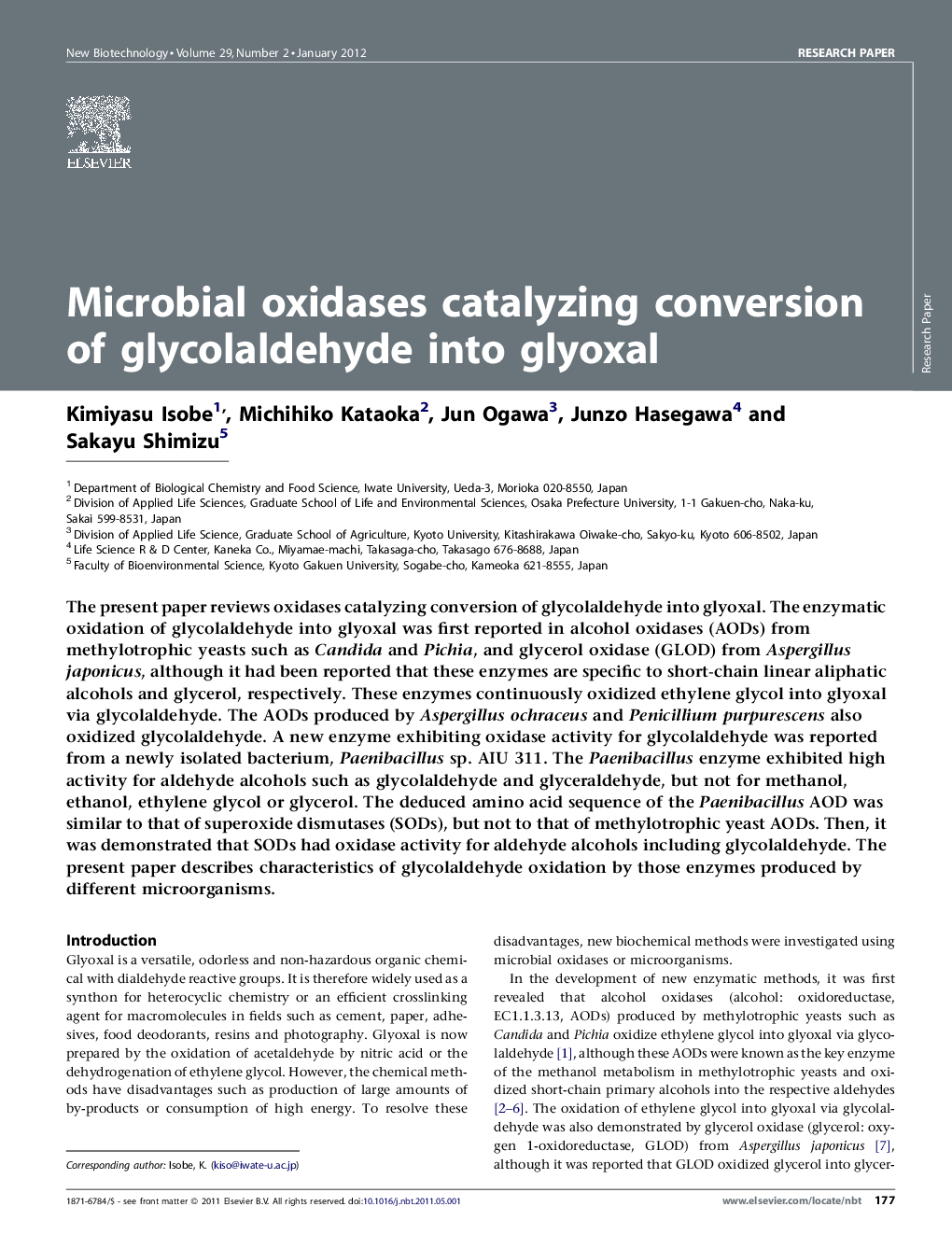| Article ID | Journal | Published Year | Pages | File Type |
|---|---|---|---|---|
| 33434 | New Biotechnology | 2012 | 6 Pages |
The present paper reviews oxidases catalyzing conversion of glycolaldehyde into glyoxal. The enzymatic oxidation of glycolaldehyde into glyoxal was first reported in alcohol oxidases (AODs) from methylotrophic yeasts such as Candida and Pichia, and glycerol oxidase (GLOD) from Aspergillus japonicus, although it had been reported that these enzymes are specific to short-chain linear aliphatic alcohols and glycerol, respectively. These enzymes continuously oxidized ethylene glycol into glyoxal via glycolaldehyde. The AODs produced by Aspergillus ochraceus and Penicillium purpurescens also oxidized glycolaldehyde. A new enzyme exhibiting oxidase activity for glycolaldehyde was reported from a newly isolated bacterium, Paenibacillus sp. AIU 311. The Paenibacillus enzyme exhibited high activity for aldehyde alcohols such as glycolaldehyde and glyceraldehyde, but not for methanol, ethanol, ethylene glycol or glycerol. The deduced amino acid sequence of the Paenibacillus AOD was similar to that of superoxide dismutases (SODs), but not to that of methylotrophic yeast AODs. Then, it was demonstrated that SODs had oxidase activity for aldehyde alcohols including glycolaldehyde. The present paper describes characteristics of glycolaldehyde oxidation by those enzymes produced by different microorganisms.
